Sponsored by Golf Pride
5 Signs You Need New Grips
As our only point of contact with the golf club, the grip is one of the most essential components. Here's how to tell if you need a fresh set...


In golf, every component of your equipment plays a role, but none is more fundamental than your grip. As your sole point of contact with the club, it provides the critical link between your body and the implement that will hopefully be propelling your ball long and straight! However, as a PGA Professional regularly playing in pro-ams, I often see grips neglected and utilised until they are visibly falling apart.
Playing with worn-out grips is much like driving a car with bald tires – it drastically compromises performance, consistency, and in extreme cases, even safety. Understanding the subtle indicators that your grips are past their prime is crucial for ensuring optimal performance. Here are five of the key signs that might show it's time to invest in new grips…
1. Loss of Tackiness
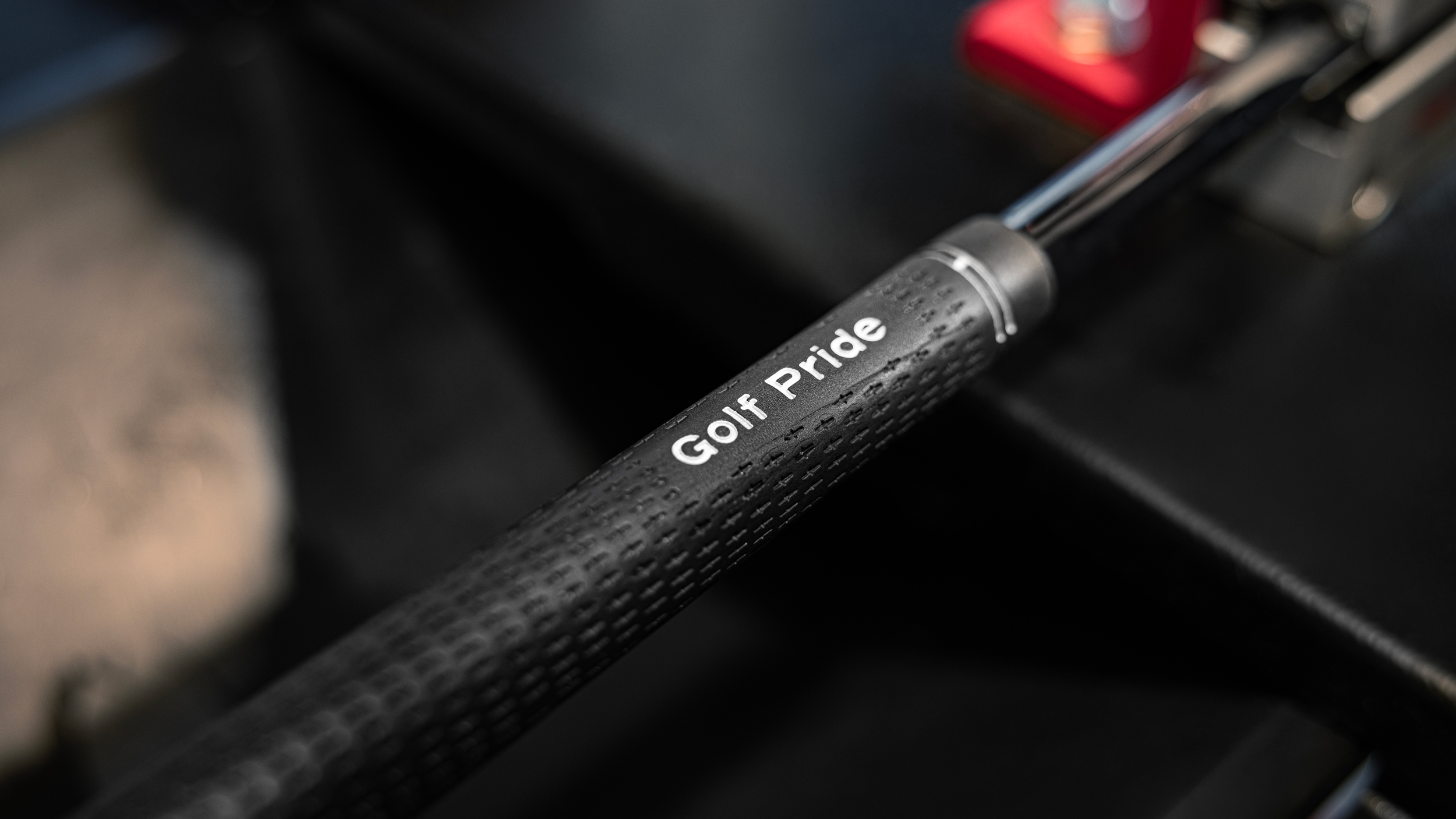
When your grips lose their tackiness they can take on a somewhat shiny appearance
This is arguably the most crucial and often the earliest indicator that your grips are deteriorating beyond salvaging. Fresh, new golf grips are designed to feel tacky, providing a secure, almost adhesive-like connection with your hands to give you the peace of mind to put a free, uninhibited swing on the ball. If your grips have begun to feel slick, hard, or glossy to the touch, even after a quick rub with a towel, they have definitely lost this essential traction. This loss of tackiness can force you to grip the club tightly, introducing unnecessary tension that can negatively affect your swing mechanics and overall consistency.
Before jumping straight in and ordering a new set of grips, I would advise anyone to give their current grips a light scrub with a brush and warm, soapy water to see if you can breathe some life back into them. Failing that, however, it is time to get some fresh new grips in play.
2. Visible Wear and Tear
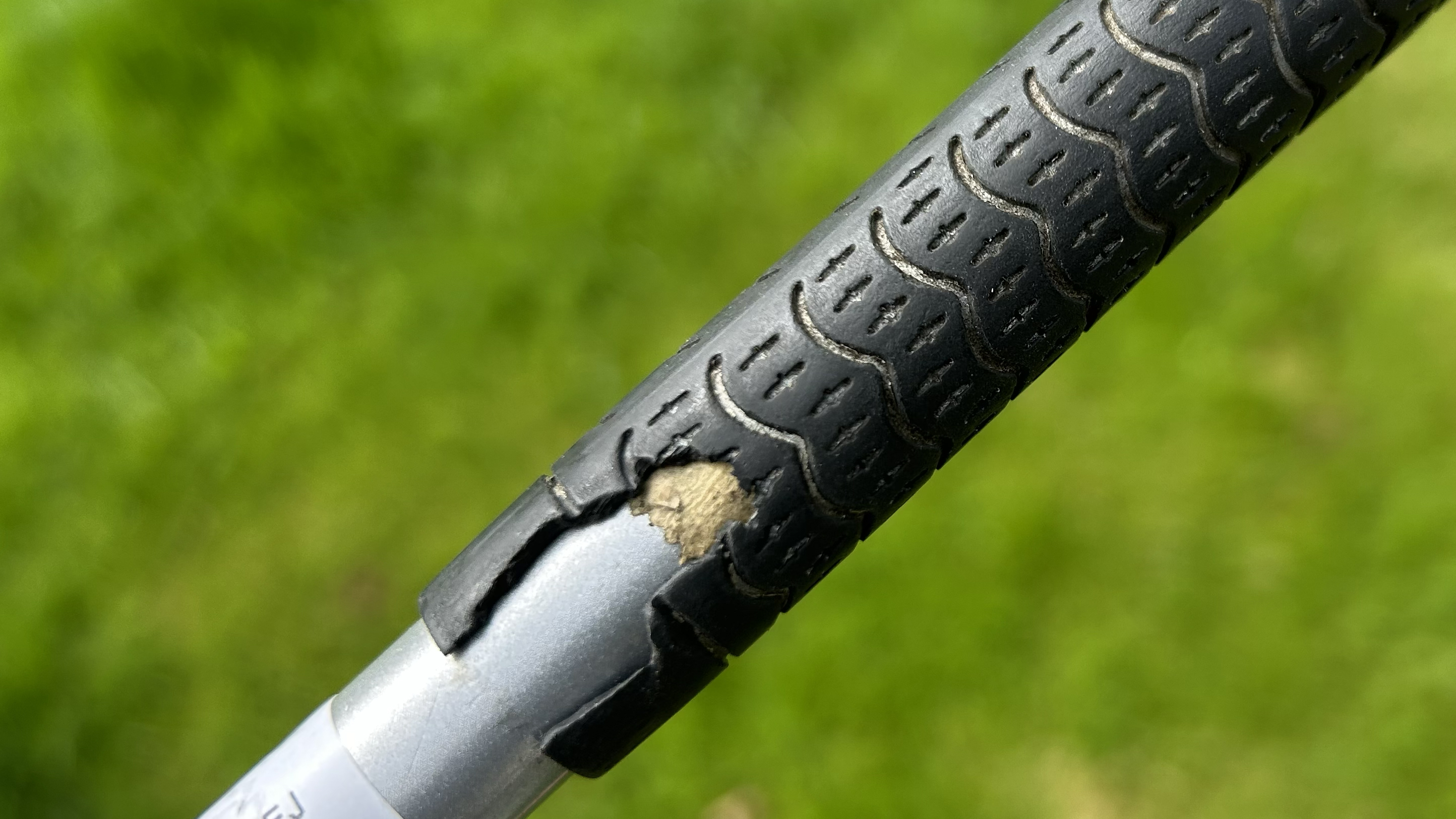
Cracking on the grips is a sure sign that it is time for a change.
While many golfers wait for obvious or catastrophic damage, such as the shaft becoming visible through a hole, visible wear often appears long before a grip completely fails. It is always worth periodically inspecting your grips closely for smooth, shiny spots, particularly in areas where your thumbs and fingers apply the most pressure. These spots can indicate that the original texture and material have worn down. Look for cracks, splits, indentations, or frayed cord if you use corded grips.
Fading logos or discoloration can also be tell-tale signs of material breakdown due to exposure to sunlight, sweat, and oils. These visual cues are clear signals that the grip's integrity is compromised, and it may be time for an upgrade into some of the best Golf Pride grips to give your clubs a new lease of life.
3. Hardening of Material
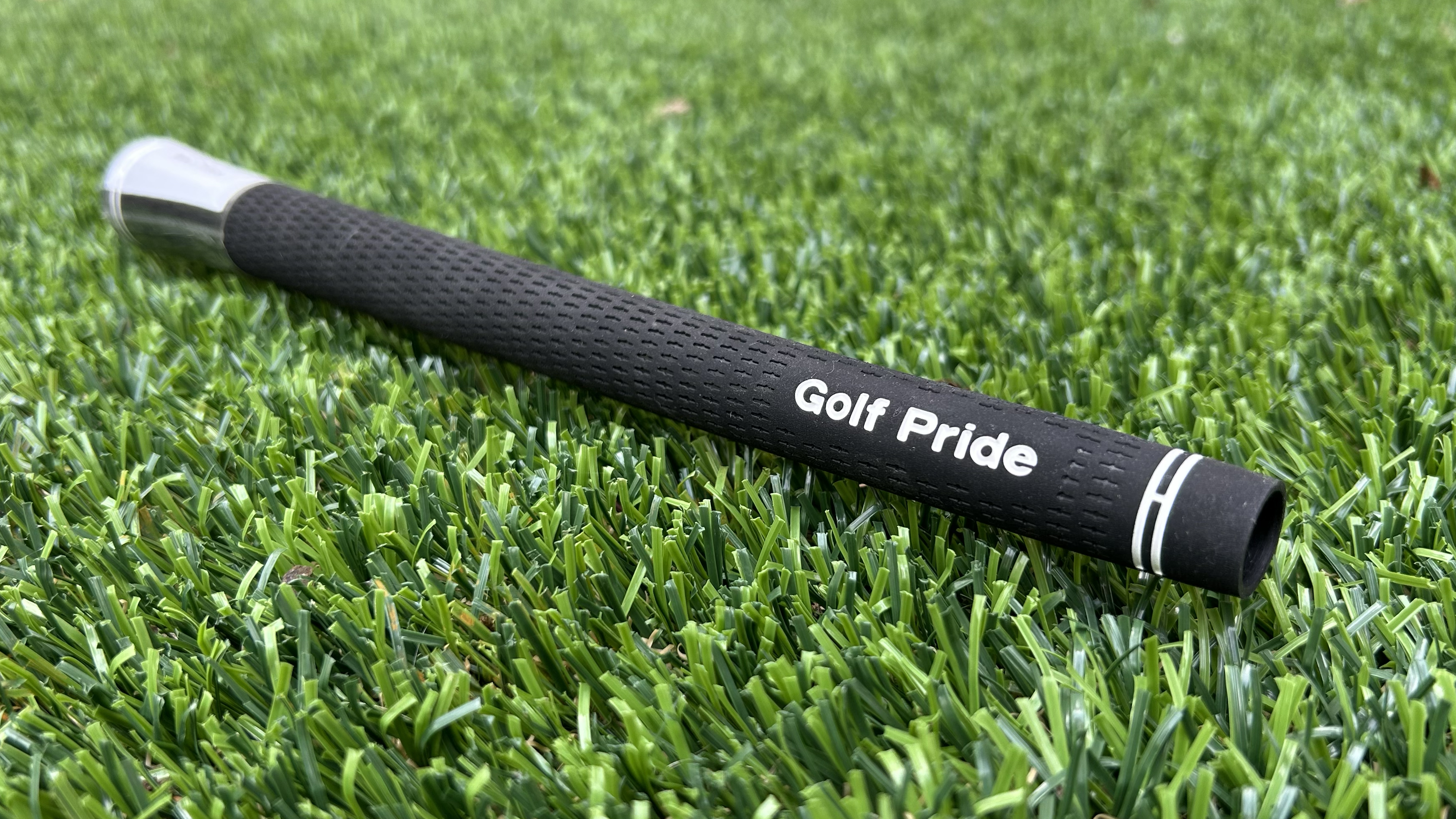
Fresh new grips like this Golf Pride Tour Velvet will have a soft, pliable feel to them
Over time, the rubber or synthetic compounds used in many golf grips can lose their elasticity and become hard and brittle to the touch. This is often accelerated by exposure to UV rays from the sun and extreme temperature fluctuations, such as leaving clubs in a hot car trunk or, for our UK readers, leaving them in a freezing cold garage for the winter. You know who you are!
A new grip generally feels pliable and offers a degree of soft cushioning depending on the model, whereas a worn, hardened grip feels stiff and unforgiving. This loss of pliability reduces comfort and can make it difficult to maintain a secure hold without excessive pressure, directly impacting your ability to control the club through the swing.
4. Slippage During Your Swing
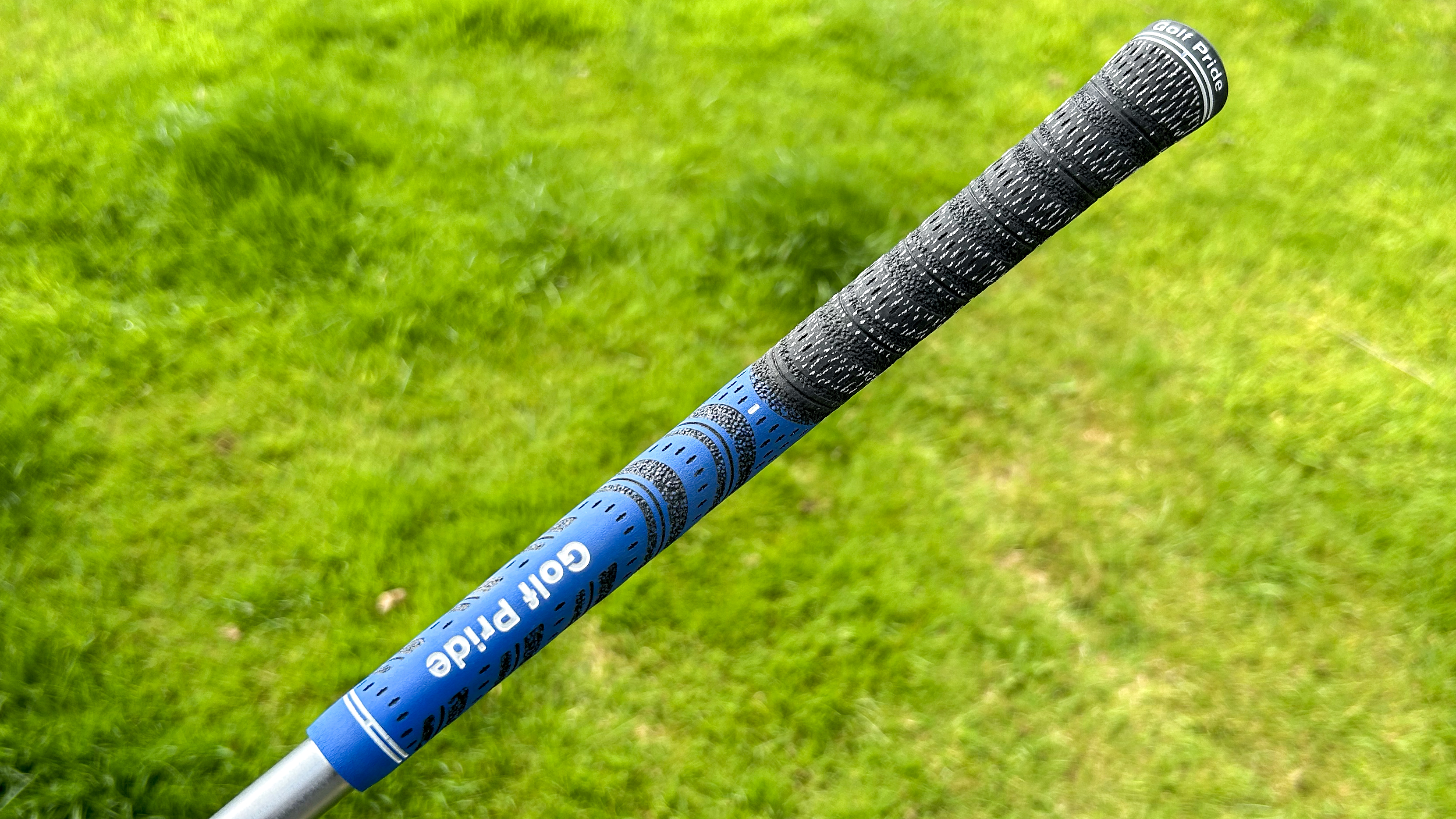
If you find your club twisting or slipping in your hands, even very slightly, during your backswing, transition or downswing, your grips are no longer providing the necessary friction for optimal performance. This slippage can be incredibly frustrating and confidence-sapping, leading to tentative passes at the golf ball rather than committed, full-bodied swings. Furthermore, it can often lead to inconsistent clubface control at impact, potentially causing pushes, pulls, slices, or hooks through no real fault of your own.
A slick, shiny grip can be a disaster for your game, forcing your hands to work harder to maintain control of the club, often facilitating a severe breakdown in your swing sequence and a loss of power and accuracy.
5. Increased Grip Pressure & Hand Fatigue
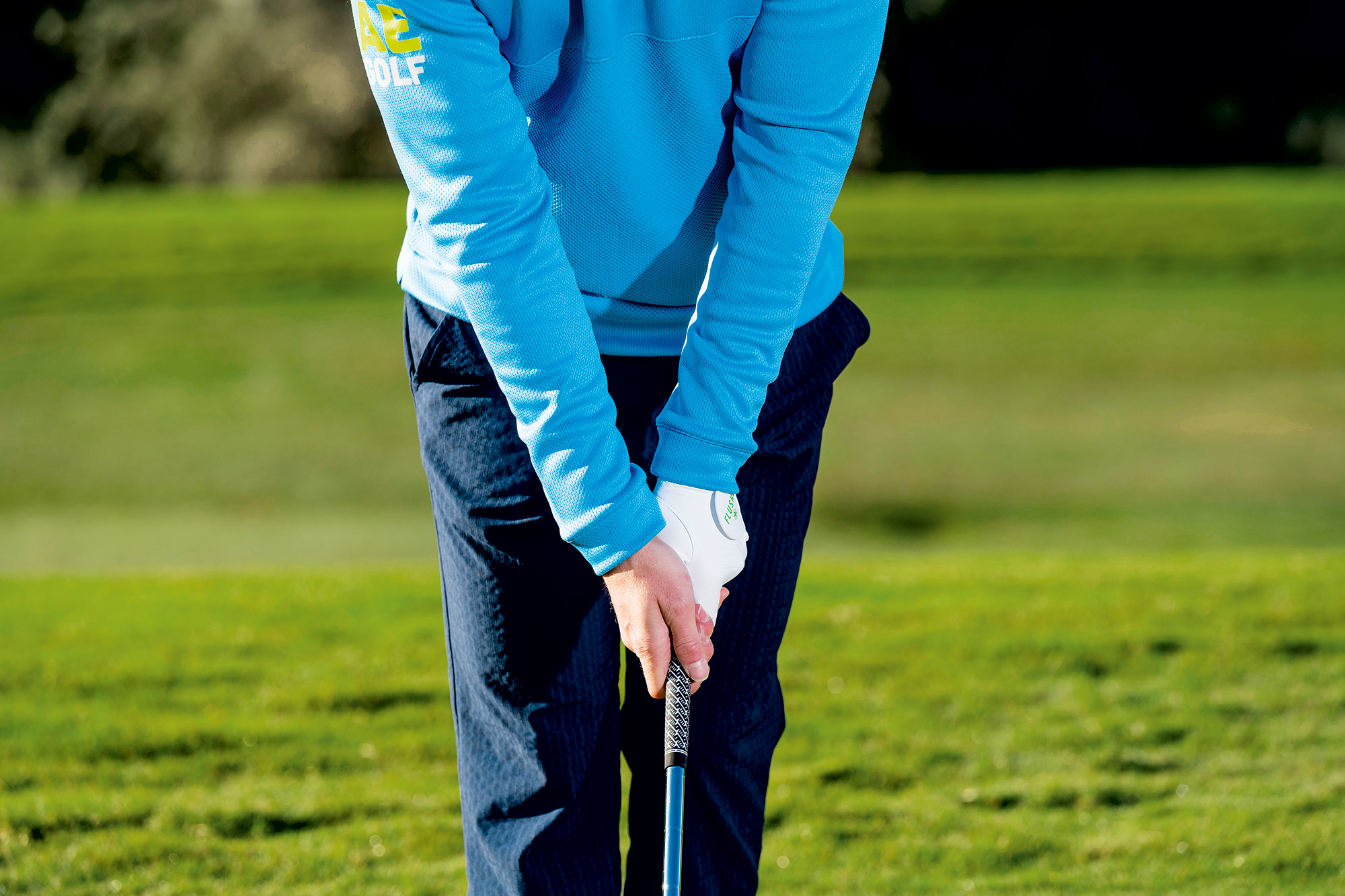
A fresh grip will not require severe of excessive pressure to maintain control of the club
As grips lose their tackiness and become harder, many players' natural instinct is to compensate for this loss of traction by gripping the club tighter. As previously mentioned, this subconscious increase in grip pressure will often introduce unwanted and excessive tension into your hands, wrists, and forearms. Not only can this tension severely restrict your swing's fluidity, reduce your clubhead speed, and lead to inconsistent strikes, but excessive grip pressure can actually cause premature hand fatigue, leading to soreness, calluses, or even blisters over the course of a round. If you find your hands aching more than usual after a round, or if you're constantly fighting to maintain control, worn grips could well be a likely culprit.
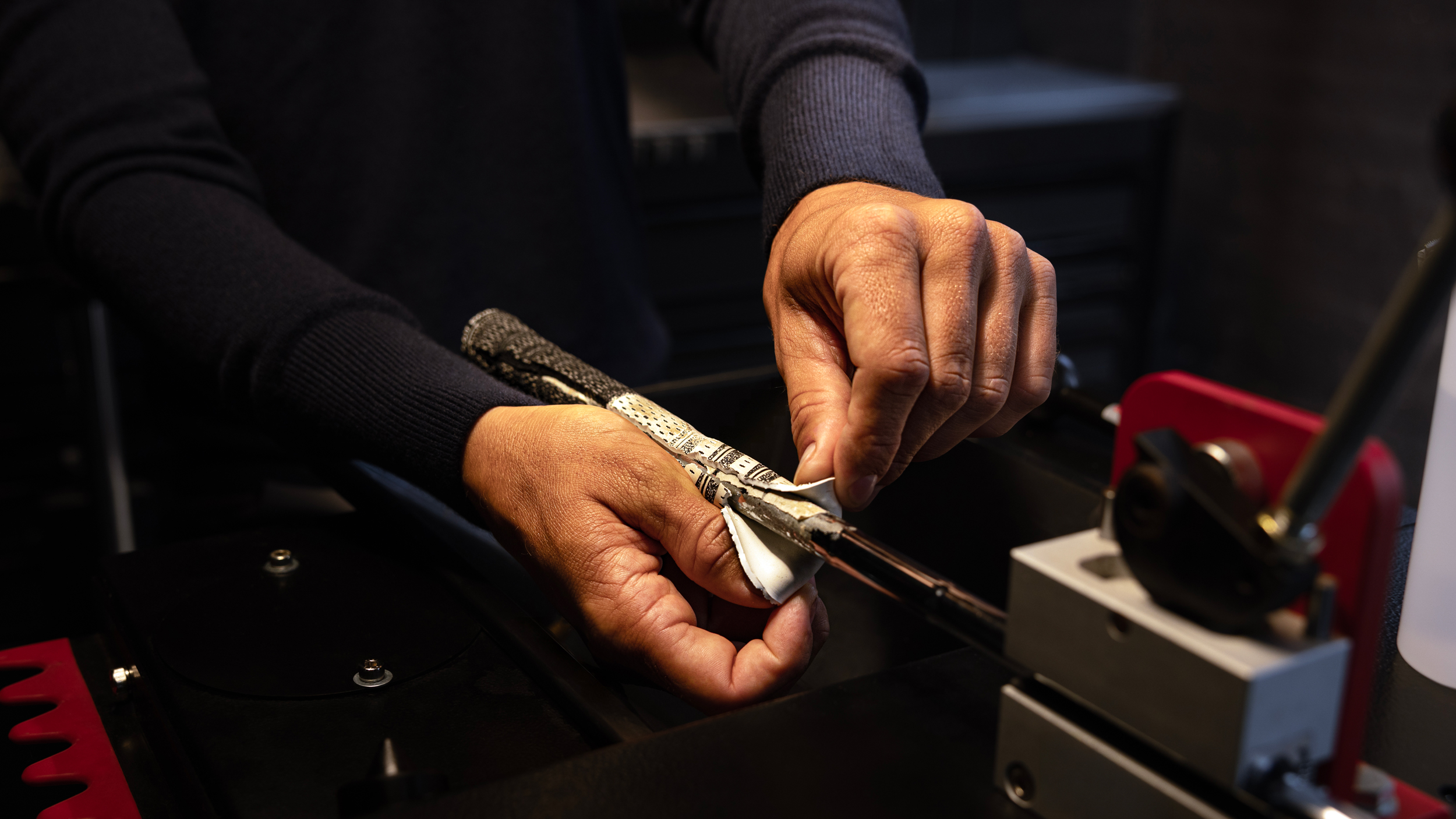
Getting your grips replaced is a simple process for your PGA Pro
In conclusion, regularly inspecting your golf grips for these five signs is a simple yet profoundly effective way to ensure you are not losing shots or even damaging yourself physically. I would implore you to stop waiting until they're visibly crumbling before making a change, like so many people unfortunately do.
A fresh set of grips can truly feel like a new set of clubs, offering immediate improvements in control, confidence, feel, and ultimately, your enjoyment on the golf course. Investing in new grips is one of the most cost-effective upgrades you can make to your equipment.
Golf Pride is one of the leading manufacturers of grips globally employed by the world's best players. Explore its comprehensive range on the Golf Pride website and find your nearest stockist.
Subscribe to the Golf Monthly newsletter to stay up to date with all the latest tour news, equipment news, reviews, head-to-heads and buyer’s guides from our team of experienced experts.

Joe has worked in the golf industry for nearly 20 years in a variety of roles. After a successful amateur career being involved in England squads at every age group, Joe completed his PGA degree qualification in 2014 as one of the top ten graduates in his training year and subsequently went on to become Head PGA Professional at Ryder Cup venue The Celtic Manor Resort. Equipment has always been a huge passion of Joe’s, and during his time at Celtic Manor, he headed up the National Fitting Centres for both Titleist and Taylormade. He’s excited to bring his knowledge of hardware to Golf Monthly in the form of equipment reviews and buying advice.
Joe lives in North Devon and still plays sporadically on the PGA West region circuit. His best round in recent years came earlier in 2023 where he managed a 9 under par 63 at Trevose GC in a Devon & Cornwall PGA Tournament.
Joe's current What's In The Bag?
Driver: Switch between TaylorMade Qi35 and Callaway Elyte TD - both with Fujikura Ventus Black 6-X
Fairway wood 1: TaylorMade BRNR Copper Mini Driver - Fujikura Ventus Black 7-X
Fairway wood 2: Callaway Apex UW 17˚- Fujikura Ventus Black 9-X
Irons: TaylorMade P7CB 3-PW with Dynamic Gold Tour Issue X100 shafts
Wedges: Callaway Opus 50, 54, and 60 degrees - Project X LS 6.0 shafts
Putter: LAB Golf Oz.1 (zero shaft lean)
Ball: TaylorMade 2024 TP5x
Grips: Golf Pride Tour Velvet 60R
Bag: Vessel Player IV Pro DXR Stand
-
 I Test Golf Shoes For A Living. Here Are The 5 Black Friday Golf Shoe Deals That Are Actually Worth Buying
I Test Golf Shoes For A Living. Here Are The 5 Black Friday Golf Shoe Deals That Are Actually Worth BuyingThere are dozens of pairs of shoes on sale this Black Friday. Here are the five that are actually
-
 Here Are 7 Gear Essentials Every Golfer Needs And Where You Can Get Them Discounted On Black Friday
Here Are 7 Gear Essentials Every Golfer Needs And Where You Can Get Them Discounted On Black FridayI've picked out the seven golf gear essentials that need to be part of your set-up, excluding clubs of course...
-
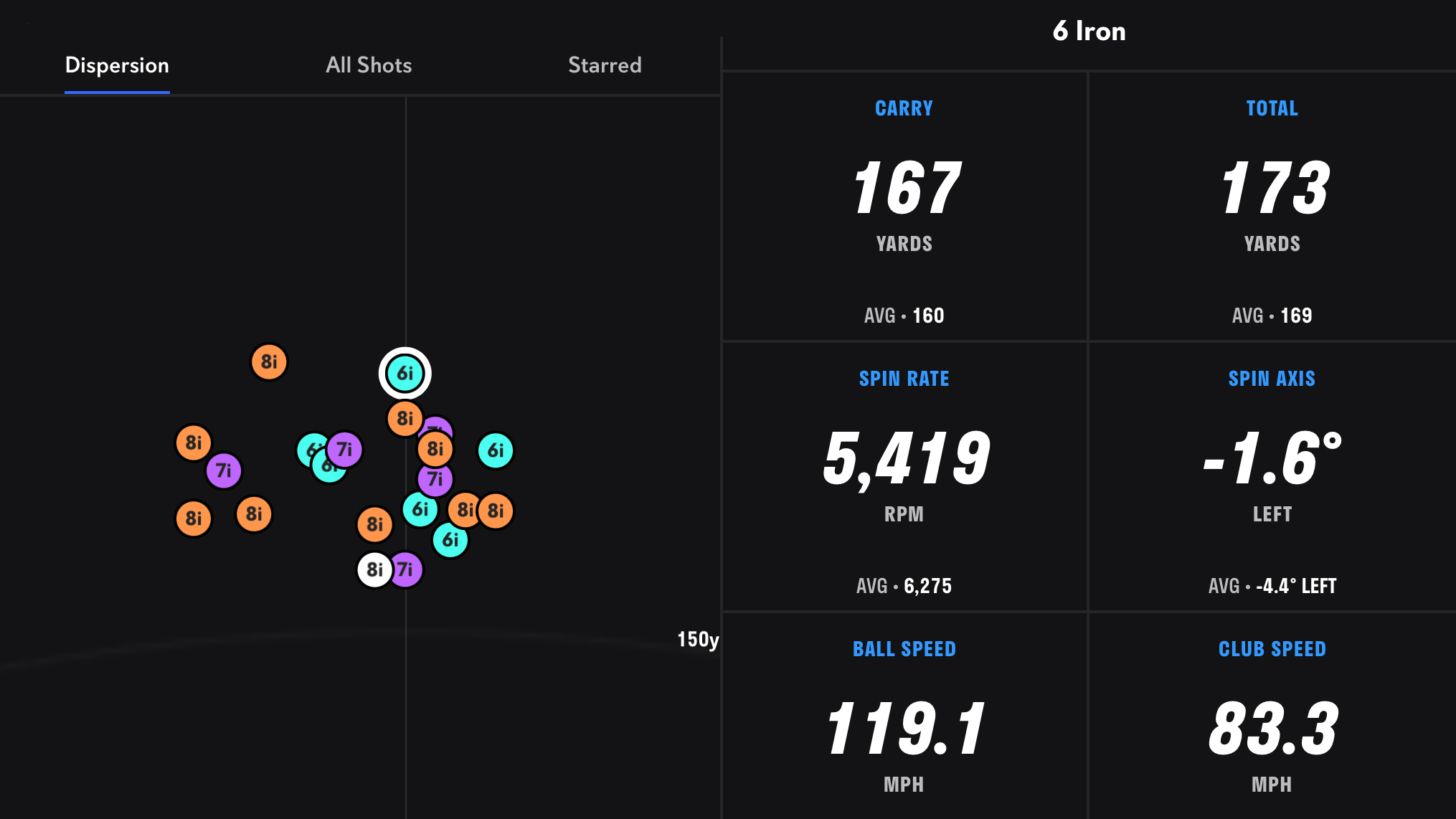 The ‘Dangerous’ Common Distance Number Golfers Should Be Wary Of
The ‘Dangerous’ Common Distance Number Golfers Should Be Wary OfAre you wrongly getting sucked into total distance numbers? If so, you're making this game more difficult for yourself than it needs to be
-
 The Equipment Debrief: New Shoes Spotted On Tour, More Brands Join The Low-Torque Party And More...
The Equipment Debrief: New Shoes Spotted On Tour, More Brands Join The Low-Torque Party And More...Another week, more new gear. If you spotted any of these, give yourself a big pat on the back...
-
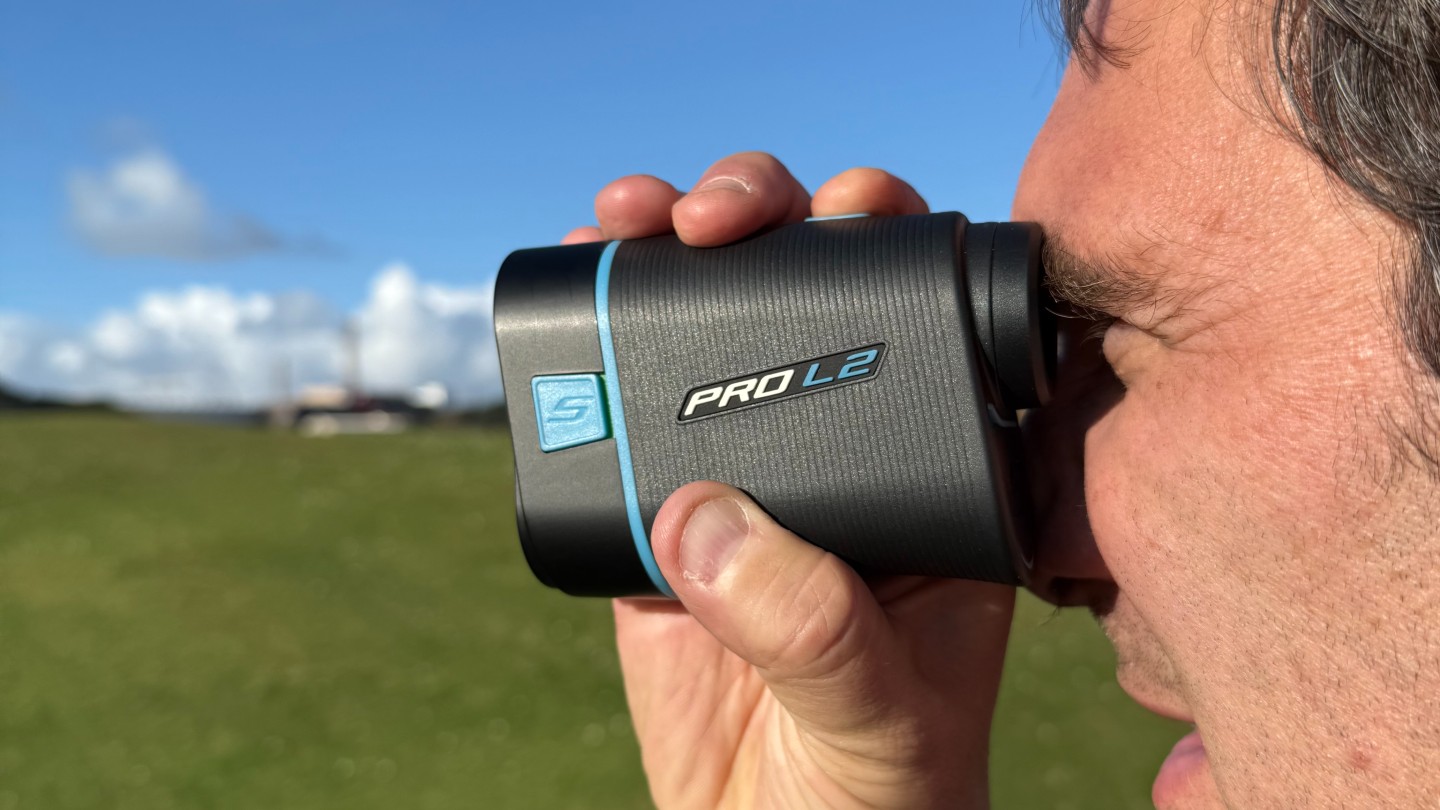 How A Budget Rangefinder Can Transform Your Game
How A Budget Rangefinder Can Transform Your GameMark Townsend has spent the year using the Shot Scope Pro L2 rangefinder and it's become an invaluable piece of equipment...
-
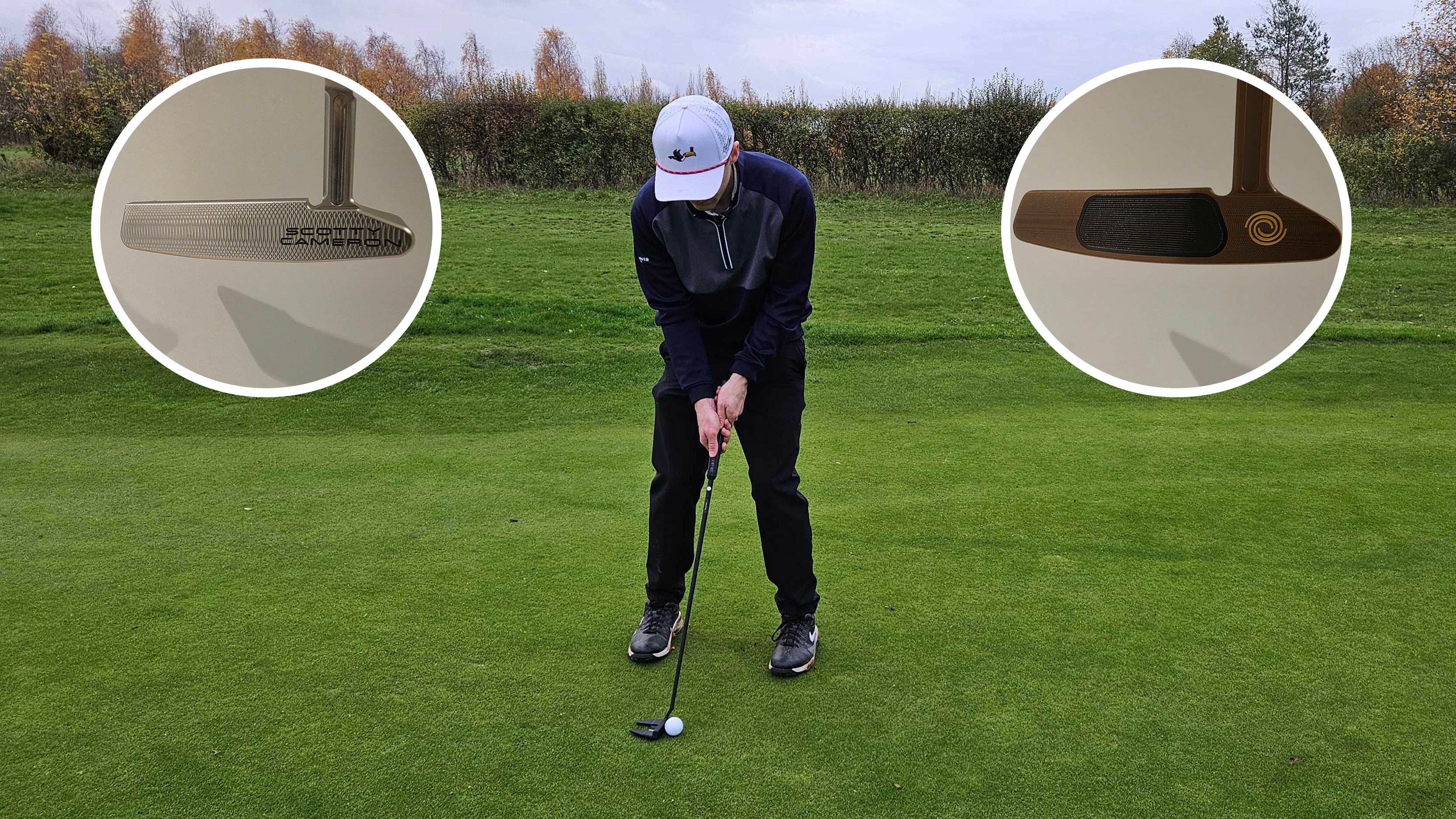 An On-Course Epiphany Led To Me Using Two Completely Different Putters... Why Don't More Amateur Golfers Do This?
An On-Course Epiphany Led To Me Using Two Completely Different Putters... Why Don't More Amateur Golfers Do This?Most amateur golfers might abandon an old putter after moving on to a new style, but I believe it is well worth keeping hold of both - here's why...
-
 Now I Know Why This Is The Best-Selling Preowned Club Of 2025
Now I Know Why This Is The Best-Selling Preowned Club Of 2025Joe Ferguson has been investigating why this particular club is still flying off the second hand shelves 18 months after its release…
-
 The Equipment Debrief: Charley Hull Spotted Making Big Gear Change
The Equipment Debrief: Charley Hull Spotted Making Big Gear ChangeAs we approach 'new gear season', more drivers yet to hit the market are spotted on tour
-
 'We Could Have Been Doing It Wrong For Years' - Why The Lie Angle On Your Irons Might Need To Change
'We Could Have Been Doing It Wrong For Years' - Why The Lie Angle On Your Irons Might Need To ChangeJoe Ferguson picks up on a 'new' lie angle theory, which has him questioning whether it's being done properly
-
 Items All Mid-Handicap Golfers Should Have In Their Golf Bags
Items All Mid-Handicap Golfers Should Have In Their Golf BagsWhat things does a golfer with a handicap index in the 10-20 range need to carry to maximise their enjoyment of a round and minimise their score?